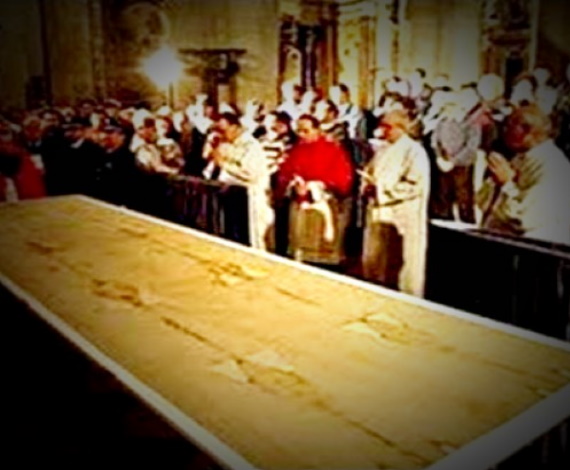
Today we republish our article that Giovanni Di Stefano wrote in March 2012 on The Face of Jesus, the Vatican Cover-Up and The Mafia Discover The Truth About The Shroud of Turin, after the Daily Mail published their article today 24 August 2024!
https://www.dailymail.co.uk/sciencetech/article-13773733/Shroud-Turin-analysis-study-Medieval-forgery.htmlhttps://www.dailymail.co.uk/sciencetech/article-13773733/Shroud-Turin-analysis-study-Medieval-forgery.html
The Shroud of Turin has become the single-most important religious relic on the planet. Said to be the cloth that was wrapped around Jesus of Nazareth after his crucifixion it is not surprising that it has become so revered. The Shroud does indeed contain the image of a man and many of the features on the cloth do show someone who was crucified. Is the body image on the Shroud that of a crucified man from the 1st century, when Jesus lived, or is it a clever forgery?
It bears the faint image of a blood-covered man with holes in his hand and wounds in his body and head, the apparent result of being crucified, stabbed by a Roman spear and forced to wear a crown of thorns.
In 1988, scientists carried out carbon-14 dating of the delicate linen cloth and concluded that the material was made some time between 1260 and 1390. Their study prompted the then archbishop of Turin, where the Shroud is stored, to admit that the garment was a hoax. But the debate sharply revived in January this year.
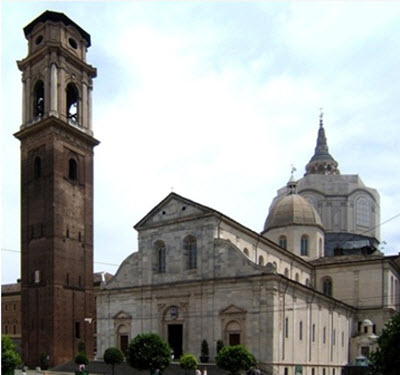 1578 Turin Cathedral – Bell tower, Church and Chapel of the Holy Shroud, Cathedral of Saint John the Baptist (Cathedral di San Giovanni Battista). The Chapel of the Hold Shroud, which was for nearly 300 years (1694-1993) the resting place of the Shroud of Turin was added to the structure in 1668-1694.
1578 Turin Cathedral – Bell tower, Church and Chapel of the Holy Shroud, Cathedral of Saint John the Baptist (Cathedral di San Giovanni Battista). The Chapel of the Hold Shroud, which was for nearly 300 years (1694-1993) the resting place of the Shroud of Turin was added to the structure in 1668-1694.
Drawing on a method previously used by skeptics to attack authenticity claims about the Shroud, Science & Vie got an artist to do a bas-relief — a sculpture that stands out from the surrounding background — of a Christ-like face. A scientist then laid out a damp linen sheet over the bas-relief and let it dry, so that the thin cloth was moulded onto the face. Using cotton wool, he then carefully dabbed ferric oxide, mixed with gelatine, onto the cloth to make blood-like marks. When the cloth was turned inside-out, the reversed marks resulted in the famous image of the crucified Christ.
Gelatine, an animal by-product rich in collagen, was frequently used by Middle Age painters as a fixative to bind pigments to canvas or wood.
The imprinted image turned out to be wash-resistant, impervious to temperatures of 250 C (482 F) and was undamaged by exposure to a range of harsh chemicals, including bisulphite which, without the help of the gelatine, would normally have degraded ferric oxide to the compound ferrous oxide.
The experiments, said Science & Vie, answer several claims made by the pro-Shroud camp, which says the marks could not have been painted onto the cloth.
For one thing, the Shroud’s defenders argue, photographic negatives and scanners show that the image could only have derived from a three-dimensional object, given the width of the face, the prominent cheekbones and nose.
In addition, they say, there are no signs of any brush marks. And, they argue, no pigments could have endured centuries of exposure to heat, light and smoke.
For Jacques di Costanzo, of Marseille University Hospital, southern France, who carried out the experiments, the medieval forger must have also used a bas-relief, a sculpture or cadaver to get the 3-D imprint.
The faker used a cloth rather than a brush to make the marks, and used gelatine to keep the rusty blood-like images permanently fixed and bright for selling in the booming market for religious relics.
To test his hypothesis, di Costanzo used ferric oxide, but no gelatine, to make other imprints, but the marks all disappeared when the cloth was washed or exposed to the test chemicals.
He also daubed the bas-relief with an ammoniac compound designed to represent human sweat and also with cream of aloe, a plant that was used as an embalming aid by Jews at the time of Christ.
He then placed the cloth over it for 36 hours — the approximate time that Christ was buried before rising again — but this time, there was not a single mark on it.
“It’s obviously easier to make a fake Shroud than a real one,” Science & Vie report drily. 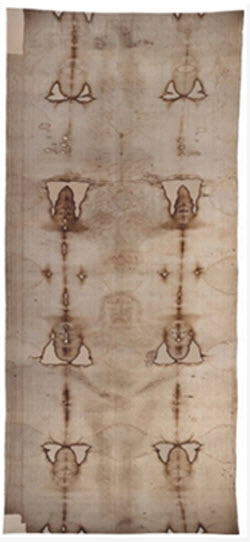
In January 2005, a US chemist, Raymond Rogers, said the radiocarbon samples for the 1988 study were taken from a piece that had been sewn into the fabric by nuns who repaired the Shroud after it was damaged in a church blaze in 1532.
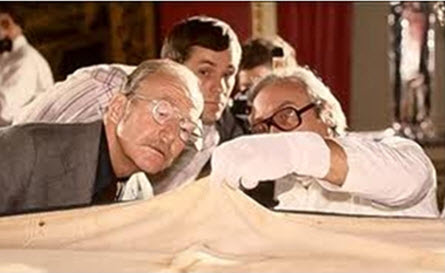

The Shroud of Turin in fact was not faked and ‘could’ possibly be real, according to Italian researchers using 21st century technology to scientifically test the alleged burial cloth of Jesus Christ.
Experts at Italy’s National Agency for New Technologies, Energy and Sustainable Development have concluded that the purported burial cloth of Jesus Christ could not have been faked.
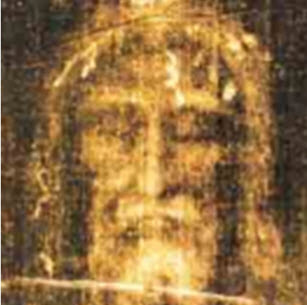
The government agency’s report officially proclaims:
“The double image of a scourged and crucified man, barely visible on the linen cloth of the Shroud of Turin, has many physical and chemical characteristics that are so particular that the staining, which is identical in all its facets, would be impossible to obtain today in a laboratory.”
The Italian government scientific agency concluded that the post-crucifixion burial cloth could not have been technologically manipulated in Medieval times, as has been theorized in the past by sceptics screaming “Fake!” as believers were yelling “Real!”
“The most advanced technology available today is unable to replicate all the characteristics of the Shroud image,” declared head researcher Paolo Di Lazzaro. “The probability the Shroud is a medieval fake is really low.”
“It appears unlikely a forger may have done this image with technologies available in the Middle Ages or earlier,” Di Lazzaro added.
The Shroud’s imprint of a male, which many believe to be Jesus Christ, the Son Of God, bears blood stains from typical Roman crucifixion wounds.
The detailed imprint is believed to have resulted from a powerful flash of light at the moment of resurrection.
After conducting many tests with X-rays and ultraviolet light technology in their attempts to replicate the Christ image, the scientific researchers concluded that:
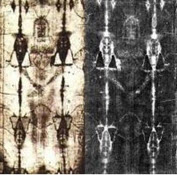
- No laser existed nor exists that can replicate the exact markings on the burial cloth.
- The markings could not have come from direct contact of the body with the Shroud linen.
- The markings could not have come from dyes or pigments.
- The markings could only have been made by a short and intense burst of VUV directional radiation.
- VUV technology did not exist in the time the sceptics claim the Shroud was faked.
The Shroud is official property of the Vatican, though the Roman Catholic Church takes no official position on the authenticity of the holy burial cloth.
Most dedicated Christian believers do not require absolute proof that the Shroud of Turin is real in order to justify their faith in Jesus Christ, which is based on a multiplicity of other spiritual factors.
To understand the controversy one has to go back to April 21st 1988 when, under the gaze of delegates from selected laboratories, the Italian Professor Giovanni Riggi carefully stripped a 3inch (70mm) sliver from a corner of the most famous relic in Christendom.
With the approval of the Church Authorities, this fragment of the Turin Shroud was placed on a precision balance, and then cut into portions which were put in specially coded and sealed canisters, and handed over to three laboratories in Arizona, Oxford and Zurich.
The purpose was to obtain three independent carbon dates for this fabric. Radio carbon dating and microscopy was done on the Shroud by STURP in 1988 and the date came back proving it was made between 1260-1390 AD. The tests were done in 3 different labs (in Oxford, Arizona and Switzerland) with a 95% accuracy on the results.
It is not very coincidental then that the Shroud first appeared on the world stage in 1357 AD (aka 14th century). Some claim that a fire in 1532 in a church in France, where the Shroud was kept, caused an inaccurate carbon date. However, most scientists who specialize in carbon 14 dating techniques still firmly claim the tests are accurate- fire or not. According to Dr. McCrone, who was part of the 1988 investigative team, “The suggestions that modern biological contaminants were sufficient to modernize the date are also ridiculous. A weight of 20th century carbon equaling nearly two times the weight of the Shroud carbon itself would be required to change a 1st century date to the 14th century”
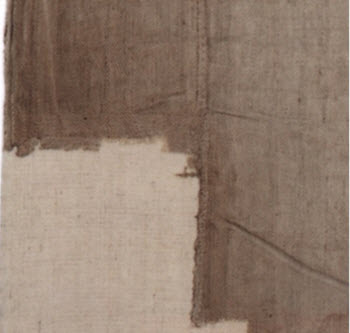 Side strip (left) and seam (centre) near the bottom right hand (i.e. frontal image feet end) corner of the Shroud
Side strip (left) and seam (centre) near the bottom right hand (i.e. frontal image feet end) corner of the Shroud
Measurements of the man on the Shroud put him as short as 5’9” and as tall as 6’2”. We know that from measurements of Jewish people from the 1st century that an avg. height of 5’1” was the norm. If Jesus was that much taller than his countrymen, his extraordinary height would certainly have been included in the Bible, as he would have been considered a giant.

Many supposed relics of Jesus existed in the middle ages onwards. There were four burial cloths in France and three in Italy. There were: the Mandylion, the Sudarium of Oviedo, the Vail of Veronica, the Holy Grail/Chalice, the True Cross, holy nails, the Holy Coat, the Holy Lance, the Holy Sponge, Jesus’ swaddling clothes, the Holy Prepuce. There is also the supposed ossuary in which Jesus was buried along with his family.
Fragments of a Shroud of a 1st century Jewish person of importance were found in Jerusalem and it did not match the weave on the Shroud of Turin at all. The Shroud is not the workmanship of the first century.
The supposed blood found on the Shroud is unrealistically neat. Dr. McCrone, one of the scientists at the original 1988 tests on the Shroud concluded, “Forensic tests for blood were uniformly negative on fibres from the blood-image tapes. Based on these findings, McCrone postulated that the Shroud was painted in 1355.”
Then there is this scientific claim, “Dried, aged blood is black” The stains on the Shroud are red. Forensic tests on the red stuff have identified it as red ochre and vermilion tempera paint. Other tests by Adler and Heller have identified it as blood.
If it is blood, it could be the blood of some 14th century person. It could be the blood of someone wrapped in the Shroud, or the blood of the creator of the Shroud, or of anyone who has ever handled the Shroud, or of anyone who handled the sticky tape. But even if there was blood on the Shroud, that would have no bearing on the age of the Shroud or on its authenticity.
Pollen’s have supposedly been found on the Shroud that exists only in the Middle East. It has been written that, “It is claimed that the cloth has some pollen grains and images on it that are of plants found only in the Dead Sea region of Israel.” Avinoam Danin, a botanist from Hebrew University claims he has identified pollen from the tumbleweed Gundelia tournefortii and a bean caper on the Shroud. He claims this combination is found only around Jerusalem. Some believers think the crown of thorns was made of this type of tumbleweed.
However, Danin did not examine the Shroud itself. His sample of pollen grains originated with Max Frei, who tape-lifted pollen grain samples from the Shroud. Frei’s pollen grains have been controversial from the beginning. Frei, who once pronounced the forged ‘Hitler Diaries’ to be genuine, probably introduced the pollen grains himself or was duped and innocently picked up pollen grains another pious fraud had introduced.

Many have made their own Shrouds over the years using different techniques (and products) that would have been available to those in the 14th century; the last being that of Luigi Garlaschelli, who placed a linen sheet over a volunteer and then rubbed it with an acidic pigment. The Shroud was then aged in an oven before being washed to remove the pigment. He then added blood stains, scorches and water stains to replicate the original.
It would appear the owner of the Shroud was Geoffroi de Charny. In a letter to the Pope written in 1389, D’Arcis stated that Geoffroi falsely and deceitfully… procured for his church a certain cloth which had been cunningly painted, and pretended that it was the actual Shroud in which our Saviour Jesus Christ was enfolded in the tomb. It was suggested that the Shroud was the centrepiece of an elaborate marketing campaign launched by Geoffroi, and intended to drive up the sales of accompanying souvenirs he sold to the masses for a substantial profit. According to D’Arcis, the Shroud was the work of human skill, and the identity of the person who forged the Shroud had been established, although his name was never mentioned.
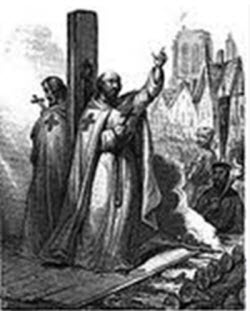
However, the pope instituted restrictions that included prohibiting Geoffroi II from displaying the Shroud as a holy relic. He decreed that every time it was displayed in public, the exhibitor had to inform onlookers that the Shroud was not the actual burial garment of Jesus, and contained only an artistic rendition of his face.
The gospel writers mention a risen Jesus, but offer nothing about his burial Shroud. If a miraculous image really did come to exist on his burial cloth would not the gospel writers have added that somewhere into the resurrection story?
The truth behind the Shroud of Turin is somewhat simpler. A French priest Brother Bruno Bonet-Eymard was among the first to claim that it was the carbon-dating not the Shroud which had been faked.
Documents covertly supplied by the Security Services in liaison with a high ranking official working within the Santa Sede (MF) clearly show instructions from His Holiness Pope John Paul II to ensure that the ‘Sindone retains doubtfulness.’
The High ranking official MF who had been active since the Michele Sindona and Roberto Calvi affair carried out his duties on the orders of Pope John Paul II.
The logic was relatively easy to follow.
If the Shroud was genuine, as it has subsequently proved to be then Jesus Christ, if such a person truly existed, was laid on the Shroud whilst still alive. So to protect the central religious doctrine of the Resurrection, Pope John Paul II chose the better of the two evils. Better the Shroud be a fake or sustain question marks than to have the house of cards fall. Jesus simply had to be dead when on the Shroud because that would sustain the doctrine that he died and resurrected.
The truth of the matter was realised by the astute professor of law, the high ranking official that had served for years the Vatican in its time of high scandal. The high ranking official was remarkably not even a priest but a Monsignor and was the legal brain behind the Vatican Bank scandal. He applied his mind to science and theology and ensured by corrupting the scientists that the Roman Catholic Church would survive.
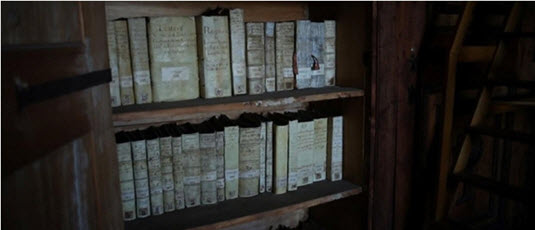
The documents and notes from His Holiness Pope John Paul II are converted deep within the Vatican Secret Archives (Archivum Secretum Vaticanum) and the keeper of the vaults was Alfons Stickler who had held the task since September 1983. He was an Austrian Cardinal loyal to Pope John Paul II who was a strong supporter of traditional mass and the celibacy of the clergy. He died in 2007 with a wish that the issue of the Turin Shroud would be made public.
The knowledge that Pope John Paul II had instructed the high ranking official (MF) to “cause doubt” on the Turin Shroud was too much for him and he resigned on 1st July 1988.
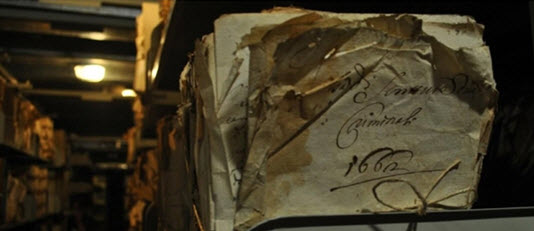
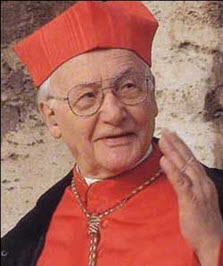
Stickler had taught ecclesiastical legal history at the Canon Law Faculty of the Salesian University in Rome, was Dean of the faculty and finally Rector of the university. On 25 March 1971 (Ash Wednesday) Pope Paul VI appointed him the Prefect of the Vatican Library, which was according to Stickler himself, the most significant “change in his career path”. On 8 September 1983, Stickler was appointed ‘Pro Librarian of the Holy Roman Church,’ as well as being Titular Bishop of Bolsena. Pope John Paul II personally consecrated him Bishop on the Feast of All Saints 1983. On 7 July 1984, Pope John Paul II also gave him responsibility for the Vatican Secret Archives. In the Consistory of 25 May 1985, Pope John Paul II made him Cardinal and give him as titular, the Church of San Giorgio in Velabro.
The Church was on the night of 27 to 28 July 1993 severely damaged in a bomb attack, the work of the Mafia that according to one ‘pentito’ had discovered the secret Stickler carried regarding the Turin Shroud. The Mafia never had any scruples in killing clergy if they felt the clergy interfered in their business. But this was just a warning. The Italian Government stated the Mafia felt that the Roman Catholic Church had abrogated an unwritten hands-off policy toward organized crime.
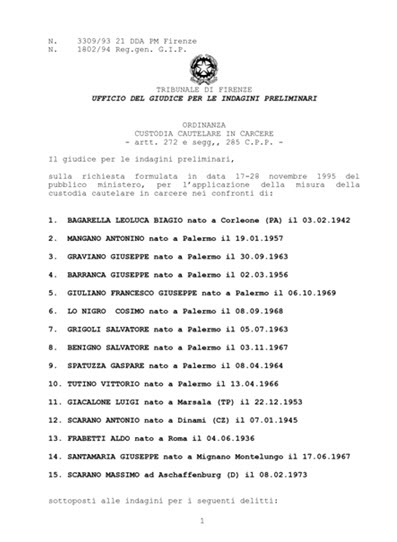
The main breaks in the case, the investigators said, came from ordinary citizens who volunteered observations of suspect activity, from Mafia turncoats and from telephone taps in apartments and jail cells. It was in the analysis of the telephone interceptions that the real objective and motive emerged.

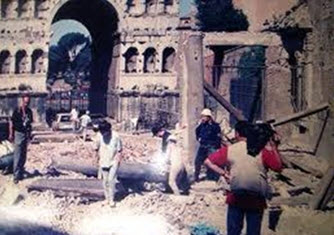
Stickler resigned leaving intact his theological dogma but what one Vatican Official has described “not only a broken heart but a broken soul.”
Science today has corrected the corruption of 1988 but the world has moved so fast-forward that the doctrine of Jesus’s death and Resurrection will always be a matter of faith rather than fact.
The Roman Catholic Church is founded on faith but the Shroud of Turin is indeed genuine and whether Jesus Christ is the face on the Shroud will always remain a question of faith.
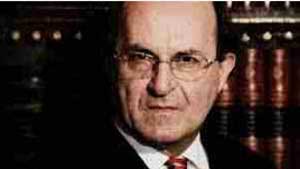
GDS
NB: Some images retrieved from Google, will remove at owner’s request.
Originally published March 2012 and 5 May 2015 and May 2020


I am truly grateful to the holder of this web page
who has shared this impressive post at at this place.